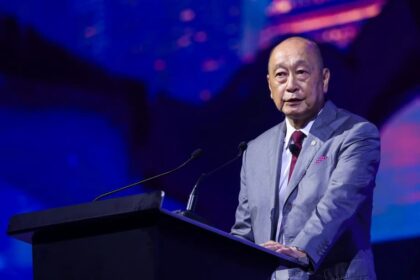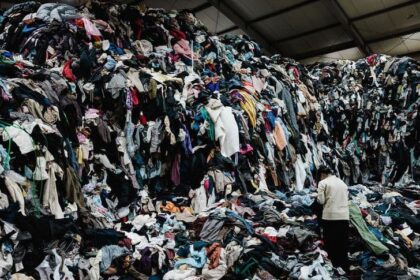How a youth movement collided with a sweeping online crackdown
At least 19 people were killed and hundreds were injured in Nepal after youth driven protests against alleged corruption and the government’s shutdown of major social media platforms erupted into deadly clashes near the national parliament in Kathmandu. The confrontation, led largely by demonstrators identifying as Gen Z, began as a rally against new restrictions that made Facebook, Instagram, X, WhatsApp, YouTube and other platforms inaccessible to most users. It quickly became a broader outcry over governance, inequality and public trust.
- How a youth movement collided with a sweeping online crackdown
- What triggered the anger
- Corruption, inequality, and a generation left out
- Government stance and political fallout
- Human rights and the law
- How social media underpins daily life in Nepal
- Scenes from Kathmandu and beyond
- What comes next
- The Bottom Line
Police deployed water cannons, batons and rubber bullets. Witnesses and several media reports described officers firing live rounds when crowds pushed through barricades and spilled into restricted zones around the parliament complex. The government imposed a curfew in central Kathmandu and deployed soldiers to key areas. Two more people died in the eastern city of Itahari after the curfew order, according to local authorities. Home Minister Ramesh Lekhak resigned on moral grounds as the death toll rose, while Prime Minister K.P. Sharma Oli convened an emergency cabinet meeting under intensifying political pressure.
A day of surging crowds and sudden gunfire
The protests swelled into tens of thousands around the parliament compound, where demonstrators chanted against graft and the online blockade, waved national flags and held signs that read “Unban social media,” “Shut down corruption and not social media,” and “Youths against corruption.” Some protesters climbed over walls, broke through a barricade and briefly overran a security post. Police responded with tear gas and high pressure water cannon. Reports from hospitals in Kathmandu described a steady flow of casualties with gunshot and shrapnel wounds. Doctors said tear gas also drifted into clinical areas, briefly hindering treatment.
Scenes of chaos rippled beyond the capital. Police reported multiple deaths in Kathmandu and two in Itahari, and local media and international outlets cited several hundred injuries nationwide. Protesters ferried the wounded to hospitals on motorcycles. In one incident recorded by reporters, an ambulance was set ablaze near the parliament perimeter. By evening, curfew orders blanketed the government district, yet clusters of protesters still gathered at road junctions, a sign of how quickly the movement had spread.
What triggered the anger
The spark was a sudden shutdown of 26 social media platforms that had not complied with a government directive to formally register in Nepal and designate a local representative. Officials framed the step as a way to curb fake news, hate speech and online fraud, arguing that major platforms must accept clear obligations under Nepali law. For many young Nepalis, the move felt like collective punishment. Social platforms are integral to daily life in Nepal, from family communication and diaspora ties to small business marketing, news consumption and creative work.
The new rules behind the shutdown
Authorities are enforcing requirements under the Directives for Managing the Use of Social Networks, 2023, which call on platforms to register, appoint a point of contact in Nepal and follow takedown requests aligned with national law. Officials said noncompliant services were blocked after repeated notices. Some platforms, including TikTok and Viber, continued to operate after registering, and the government later said a small number of services had been reactivated after belated compliance. Many users bypassed the restrictions with virtual private networks. The government insists it is not banning social media, but rather bringing global platforms under a regulatory framework that it says has been ignored for too long.
The new regime arrived with little warning for users. Businesses that rely on social networks to reach customers reported sudden disruptions. Journalists and creators voiced concern that content critical of politicians could be taken down under vague standards. Rights advocates warned that enforcement without clear safeguards risks stifling lawful speech. Several of those concerns boiled over into the streets.
Corruption, inequality, and a generation left out
Protesters repeatedly said their frustrations extend beyond the internet rules. Many cited a sense of entrenched corruption, few consequences in high profile cases and a political class they view as insulated from economic distress. Since Nepal ended its monarchy in 2008, the country has cycled through many governments, none completing a full term, leaving younger citizens with little confidence that reforms will take hold. In a country of roughly 30 million people, about 90 percent are online, yet a large share of the youth cohort seeks education or work abroad, a sign of limited opportunity at home.
Why Gen Z is at the center
Organizers dubbed the rallies the “Gen Z protest” to underscore the age of most participants. Many students wore school or college uniforms. Social media helped coordinate assembly points even during the shutdown, with videos on TikTok highlighting perceived inequality and the privileges of children of political elites. Young Nepalis said they want practical fixes: transparent investigations into graft allegations, credible prosecutions where evidence warrants it, and rules that protect speech while tackling genuine harms. The social media blockade, they argued, took away a voice that traditional politics often denies them.
Government stance and political fallout
Officials said they respect freedom of expression but must act against misuse that harms public order. They argued the registration policy is a lawful step that global companies should have expected. Before the protests turned deadly, the prime minister defended the tougher approach, saying national sovereignty and compliance with law are nonnegotiable. After the violence, the cabinet faced pushback from opposition parties and some members of the governing coalition who called for a review of the restrictions. The army deployment and curfew orders signaled the gravity of the challenge now facing the government.
Did police fire live rounds
The communications ministry initially said security forces used water cannons, batons and rubber bullets. Multiple outlets, along with physicians at Kathmandu’s National Trauma Center, reported patients with head and chest wounds consistent with live ammunition. Police confirmed fatalities but did not publicly detail the types of rounds fired during the most intense confrontations. Human rights observers urged authorities to publish a full accounting of force used, citing international standards that limit the use of firearms to situations involving imminent threat to life.
Human rights and the law
Nepal’s constitution protects the right to peaceful assembly and expression, and the country is party to the International Covenant on Civil and Political Rights (ICCPR). The UN Basic Principles on the Use of Force and Firearms by Law Enforcement Officials state that lethal force may only be used to protect against an imminent threat to life. Rights groups said video and medical evidence point to disproportionate responses against largely peaceful crowds, especially in the early phases of the rally before clashes escalated at the parliament perimeter.
Nirajan Thapaliya, director of Amnesty International Nepal, urged de escalation and an independent probe into the deaths and injuries.
“We strongly condemn the unlawful use of lethal and less lethal force by law enforcement in Nepal. The authorities must exercise maximum restraint, investigate the deaths thoroughly, independently and impartially, and ensure full accountability and reparations for victims.”
Ravina Shamdasani, spokesperson for the UN human rights office, called for transparency and a reassessment of the online restrictions in light of the violence.
“We are shocked by the killings and injuries of protesters in Nepal and urge a prompt and transparent investigation. The government should reconsider the social media measures and ensure policing is consistent with international human rights standards.”
How social media underpins daily life in Nepal
In Nepal, social platforms are more than entertainment feeds. They knit together families separated by migration, broadcast emergency information during landslides and floods, channel customers to small shops and tourism operators, and give independent journalists and creators a way to reach audiences without large budgets. Messaging apps function as the primary contact point for relatives working overseas, whose remittances support households and the national economy. Cutting off those tools, even temporarily, can disrupt livelihoods, hamper news distribution and deepen mistrust in official information flows.
Global push to regulate tech, local stakes in Nepal
Governments worldwide are rewriting rules for large platforms, citing misinformation, data privacy, fraud and online harm. Many require local representation and responsiveness to lawful orders. In Nepal, the challenge is balancing those goals with protections for speech and assembly that have been central to the country’s democratic journey since 2008 and the adoption of a new constitution in 2015. Building credibility around takedown standards, appeal rights and independent oversight will be critical if the state seeks cooperation without chilling criticism.
Scenes from Kathmandu and beyond
By mid morning, crowds had surged down the avenues around parliament, singing the national anthem and unfurling flags. Lines of riot police stood behind coils of barbed wire. As demonstrators pressed forward, police fired canisters of tear gas that drifted across hospitals and government offices. When the barricades gave way in places, protesters climbed the walls and shoved at the gates, prompting officers to retreat into the compound. A wave of panic followed sharp cracks that witnesses said were gunshots. Sirens echoed as volunteers and motorcyclists shuttled the injured to trauma centers. Similar protests erupted in Biratnagar, Bharatpur and Pokhara.
By late afternoon, authorities ordered a curfew around the parliament, the government secretariat and the presidential residence. Streets emptied in bursts, but small groups continued to chant against corruption and the shutdown. The scale and speed of the unrest underscored how quickly a narrow policy fight over registration requirements had ignited frustrations that had been building for years.
What comes next
Families of the dead and injured are demanding accountability. Rights groups want the government to identify officers who used lethal force in violation of standards and to publish transparent findings. Lawmakers face pressure to narrow or suspend the online restrictions or to pass a clearer framework with safeguards against censorship. Some members of the ruling coalition have urged a rethink. Officials said two platforms were restored after compliance, a small sign of movement. An Indian news outlet reported that the cabinet revoked the broader social media ban after the deadly clashes, but major international outlets had not independently confirmed that at the time of reporting.
De escalation will likely require concrete steps: a credible investigation panel with participation from rights experts, a pause or recalibration of the shutdown policy while parliament debates durable rules, and engagement with youth organizers about corruption concerns. The same platforms at the center of this crisis are also the tools that can help rebuild trust, provided rules are clear, consistent and fairly enforced.
The Bottom Line
- At least 19 people were killed in protests in Kathmandu and other areas as youth led crowds clashed with security forces over a social media shutdown and alleged corruption.
- Police used water cannons, batons and rubber bullets. Multiple reports and hospital accounts indicate live ammunition was also used.
- The government blocked 26 platforms that had not registered under national rules, saying the policy targets fake news, hate speech and online fraud.
- Curfews were imposed, soldiers deployed and Home Minister Ramesh Lekhak resigned on moral grounds as pressure mounted on Prime Minister K.P. Sharma Oli’s government.
- UN and Amnesty International called for a prompt, transparent investigation and urged the government to reconsider the restrictions.
- Social media is central to communication, business and news in Nepal. Many users resorted to VPNs, while some platforms, including TikTok and Viber, remained accessible after registering.
- Protesters say the shutdown was a trigger. The core grievance is a demand for action against corruption and a voice for younger citizens in public life.
- A credible inquiry and clearer, rights respecting online rules are seen as key steps to defuse tensions and restore trust.












